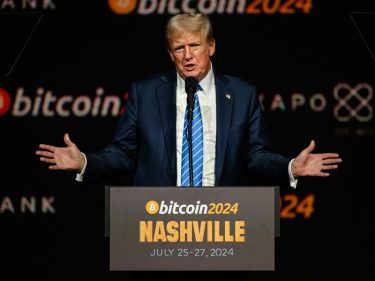TradFi Rushes In: Goldman Sachs Digital Assets Lead Matthew McDermott on the Institutional Embrace of Tokenization
Approval of bitcoin ETFs was a “big psychological turning point,” reigniting retail trading interest in crypto and bringing in new types of institutions.
Tokenization is a growing trend due to the sheer benefits of “digitizing the lifecycle” of asset issuance by improving firms’ operating efficiency and increasing liquidity.
Crypto has the ability to transform parts of the financial system to operate in more efficiently.
AUSTIN, TX — Goldman Sachs, the 150-year-old investment bank, is getting deeper into crypto, according to the firm’s global head of digital assets, Mathew McDermott. The executive, a 19-year veteran of the bank, helped found its digital asset desk in 2021 and has since led efforts to introduce a suite of products and services including liquidity in cash-settled derivatives, options and futures crypto trading.
McDermott, who sits on the boards of Coin Metrics and HQLAx and advises firms like One River Digital and Elwood Technologies, discussed a number of topics at Consensus 2024, including the viability of other crypto-based exchange-traded funds (ETFs) after ether (ETH), where the biggest opportunities remain for firms like Goldman and the rising popularity of tokenization.
“The bitcoin ETF obviously has been an astonishing success,” McDermott said on stage at the Money Reimagined summit. This has not just recatalyzed retail trading interest in crypto broadly, but has also started to bring in new types of institutions making new types of plays. It was a “big psychological turning point” for the industry.
Will that translate into the U.S. Securities and Exchange Commission approving a wider swathe of crypto-based products? The securities watchdog recently approved applications from exchanges like Cboe, NYSE Arca and Nasdaq that want to list ETH ETFs, but may take months to pass the S-1 filings from wannabe issuers like Ark Invest, Bitwise, BlackRock, Fidelity and Grayscale, among others.
“This is a natural progression that ETH will hopefully be approved to be a fully tradable ETF,” McDermott said. Whether that “opens the door for everybody else” like Solana (SOL). Perhaps, but perhaps not – due to the established dominance of the big two cryptos.
“From my vantage point, our clients typically just focus on bitcoin and Ethereum – they’re the two products that have tradable futures on the CME. So that’s why you can see a positive read [on ETH ETFs]. In terms of others, I think we could be positive, but I think it’s too early to say.”
Goldman was undoubtedly early to the tokenization trend, though has yet to fully embrace using open blockchains. McDermott said the firm’s decision to use private, permissioned chains beginning in 2021 had more to do with the uncertain legal environment than any sort of “strong ideological position.”
“For us, seeing what our clients want to do then becomes ‘how can you service our clients’. It’s been important to have our own platform to move in a slightly more expeditious way,” he said. Because clients like wealth managers and institutional investors’ needs can change, the firm has “options” on where it ultimately “settles.”
Ultimately, McDermott says, he sees tokenization as a growing trend due to the sheer benefits of “digitizing the lifecycle” of asset issuance, which not only improves firms’ operating efficiency but also liquidity by potentially bringing in a wider group of investors.
See also: The Benefits of Assets Tokenization
“If you can actually create a product that you can fractionalize and offer up to a much broader universe of investors that not only broadens the distribution channel but also concentrates more secondary liquidity – that is very powerful,” he said.
While McDermott said Goldman is already well on the way to proving the “commercial viability” of banks using blockchains, a lot of the products today are relatively “vanilla.” Nevertheless, if the tokenization of staid asset classes like money market funds continues, that means an additional $4.7 trillion in collateral that can be used to create derivatives and repos. “That’s hugely powerful,” he said.
“As you get clarity on the regulations, you get more people coming in on the sell side and start showing the viability of the market on-chain,” he said. “You can then start to build out and tap into these other asset classes where the value proposition probably is great,” like real estate and green debt issuance.
Might crypto ever replace banks?
“Institutions like ours actually see the potential in how it can transform where parts of the financial system can operate in a much more efficient way.”




